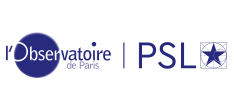Communication Dans Un Congrès
Année : 2022
la. bibliotheque : Connectez-vous pour contacter le contributeur
https://hal-obspm.ccsd.cnrs.fr/obspm-04038893
Soumis le : mardi 21 mars 2023-10:56:55
Dernière modification le : mercredi 30 octobre 2024-13:04:40
Dates et versions
Identifiants
- HAL Id : obspm-04038893 , version 1
- DOI : 10.5194/egusphere-egu22-10616
Citer
Özgür Karatekin, Véronique Dehant, Javier Ventura-Traveset, Markus Rothacher, Pacome Delva, et al.. GENESIS-1 mission for improved reference frames and Earth science applications.. EGU General Assembly 2022, May 2022, Vienne (AUT), Austria. ⟨10.5194/egusphere-egu22-10616⟩. ⟨obspm-04038893⟩
Collections
15
Consultations
0
Téléchargements

